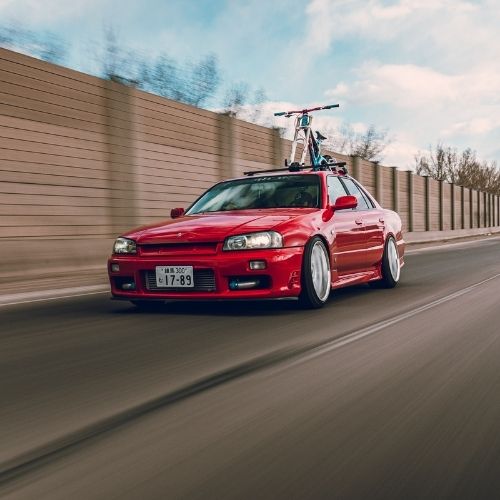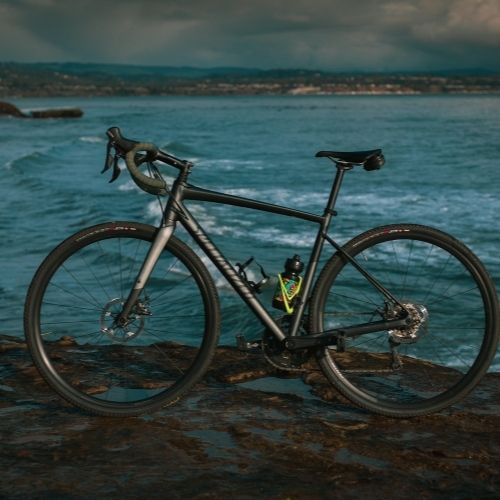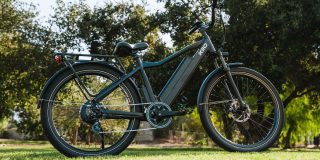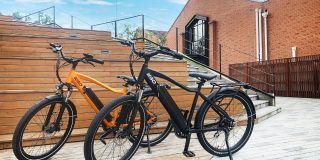Cycling has always been a popular sport, and more and more people are adopting it as their chosen form of both recreation and transportation. To do that, they’re typically looking to select a bicycle for daily use, but the choice isn’t as easy as it used to be.
There are many more types of bicycles than there used to be, so there are plenty of options for specialists. There is a single best choice for everyone, generally speaking, and that’s the hybrid.
Let’s examine what goes into the decision, and look at a couple of the other available choices.

The Hybrid Choice
Ask most cycling experts what the best bicycle is for daily use, and the vast majority will probably say the hybrid. That’s because the hybrids were originally designed to provide multiple daily options, specifically for road riding and mountain biking.
But they can also do more than that. Hybrid bikes like this one right here are an excellent choice for short shopping trips or errands, along with commuting, brief rides around the neighborhood, and just about any other choice you can come up with short of heavy-duty options.
They do present some compromises, though. Hybrids don’t compare well to road bikes if you’re looking for something lightweight that’s more efficient, so you may want to keep your road rides shorter if that matters to you.
There are also compromises in the tires, too. Hybrid bike tires aren’t appropriate for mountain bike trails—the width of the tread is medium-grade, and it’s too smooth to stand up to trail use because these tires lack the required grip and sufficient cushion.
The suspension may be problematic as well. The front suspension of a hybrid bike is adequate when it comes to handling small bumps but in some brands, it’s so rigid that larger bumps and jolts may be tough to handle.
Given those issues, let’s look at some of the popular specialty bikes. These may represent the best choice for specialist riders who want to devote themselves to one single kind of riding.
Here’s a rundown on the most important ones, along with the advantages they offer and the compromises that they, too, present when it comes to everyday riding.
Specialty Options for Daily Use
Looking to go the distance? If so, then you probably want a touring bike. They’re designed for pavement, but they also have other features that make them ideal for long-distance riding.
Their feature-set is designed to support that kind of usage, too. They can handle the hardware that makes it possible to attach cargo racks, which in turn allows the use of panniers.
Also, the frame design is less rigid, which allows the rider to sit in a more upright position. You’ll still have to deal with drop handlebars, but you’ll be more comfortable after a hard day on the road with a touring bike than you will with any of its less specialized cousins.
The gear ratio is different, too. Touring bikes generally have lower gears, which makes it easier for an extended ride where you’re climbing multiple hills at a steep angle with cargo.
They can double as commuter bicycles, especially if you’re doing a longer commute, but these bikes are built for multi-day touring trips where riders are generally doing 50+ miles a day.
- Top 6 Reasons Why Bicycles Don’t Have Kickstands
- What Do the Handlebars on a Bike Attach To?
- How Do I Know What Size Handlebars To Get My Bike
Mountain Bikes
At the other end of the spectrum, mountain bikes (like this budget minded bike) are built for single-minded riders, too, but in this case, the specialty is trail riding. The suspension of these bikes is stiffer, and they have more low gears to handle tough trails where traction may be a serious issue.
Mountain bikes can be used for commuting or even touring, but you’ll be setting yourself up for a tough go. The extra weight will make you work harder, and the thick tires will make your pedaling less efficient.
They’re great if you want to get out into the woods or rough terrain on a regular or even a daily basis, but if you’re looking for something diverse they’re not a good choice.
Frequently Asked Questions
Cruiser bicycles are the most comfortable type of bicycle. Cruiser bicycles have padded seats, wide handlebars, and low gears, which make them easy to ride. Cruiser bicycles also have a wide wheelbase, which makes them stable. Cruiser bicycles are made for cruising around town or on bike paths. cruiser bicycles are not made for racing or riding off-road.
The lightest bicycle is the road bicycle. Road bicycles are made of lightweight materials and have thin tires. Road bicycles are designed for riding on pavement.
Mountain bicycles have the most gears. Mountain bicycles have 27 or more gears. Mountain bicycles are designed for riding off-road.
Conclusion
So what does all this mean? How do you make the best choice for your daily use. and what kinds of questions should you ask yourself to make your decision?
To start, make a list of the types of riding you’re going to be doing. Attach a percentage value to each item on the list—50 percent commuting, 25 percent touring, 10 percent mountain biking, and so on.
These numbers will be subjective and variable, of course, but they’ll help identify your priorities. They’ll also tell you if you’re a specialist looking for a specific kind of bicycle or a generalist who might do better with a hybrid bike.
Regardless of your choice, remember that you can’t go wrong in, the long term. Many people start out buying one kind of bike, then add others as their needs and tastes change.
And it’s okay to be a specialist or a generalist, as long as you enjoy your two-wheeled time, whether you’re out on the road, deep in the woods, or on a long tour.














